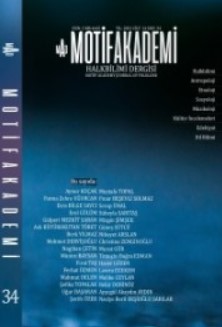SÖZDEN YAZIYA VARTO ALEVİLERİ: SEYYİD NESEMİ TÜRBESİ ÖRNEĞİ
VARTO ALEVİS FROM VERBAL TO WRITING: SAMPLE OF SEYYID NESEMI TOMB
Author(s): Fırat TaşSubject(s): Cultural history, Oral history, History of Islam, History of Religion
Published by: Motif Halk Oyunları Eğitim ve Öğretim Vakfı
Keywords: Oral culture; written culture; Alevism; transformation; Varto; Seyyid Nesemi;
Summary/Abstract: Traditionally, Alevism continued in this form until the modern period as a belief that was verbally constructed, transmitted and lived. It is based on oral culture and tradition in terms of its institutionalization as well as belief, culture and ritual. With the intense schooling rate and urbanization experienced in Alevis in the modern period, the verbal mind gradually began to leave its place to the written culture. However, since Alevism does not yet have a written form of institutionalization and transmission, the perception of belief through written culture emerges as a new situation. This is a process in which a radical change is experienced that is not limited to the execution environments of Alevism. Changing environmental factors have brought along mental and cultural changes. The transformation of Alevism, which is historically and traditionally based on oral culture, in the context of verbal and written will be the main problem of our study. In this context, the transformation of the Alevi faith in the context of oral and written culture is discussed, based on the texts in a book in the Seyyid Nesemi Tomb in the village of İçmeler (Reqesan) in the Varto district of the province of Muş. The relationship of this transformation with the traditional Alevi belief and transference styles and the transformations these relations have experienced in the modern period are tried to be addressed and evaluated in this context. Varto Alevis have been very familiar with educational and media tools and written culture and ways of thinking in the last fifty years, but this situation has not spread to the elements of belief and belief. The transformation that started to take place specific to the tomb in question shows that the written culture has started to affect this area as well. It is possible to state that this process, which is still in its initial stage, will be experienced in different dimensions in the future.
Journal: Motif Akademi Halkbilimi Dergisi
- Issue Year: 14/2021
- Issue No: 34
- Page Range: 573-586
- Page Count: 14
- Language: Turkish

